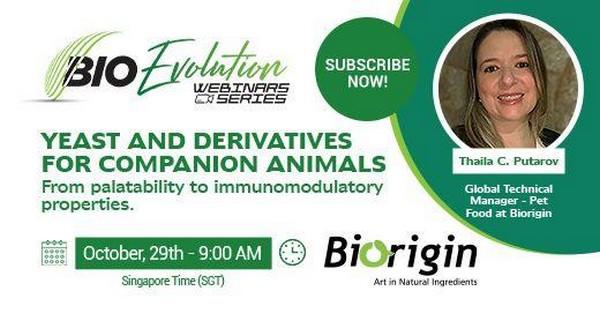However, there are conflicting positions! In this article we analyze the types of trace minerals, the different voices, advantages and disadvantages of incorporating this ingredient into pet food recipes.
Pet owners, and especially millennials, are increasingly interested in providing the best nutrition, care and quality of life for their pets. In this sense, trace elements such as zinc, copper, iron and manganese are an essential part of this formula for well-being, since they play a key role in cellular functions, oxygen exchange and other bodily processes.
What are trace elements or trace minerals?
Trace minerals are elements that are required in very small amounts to achieve a balanced diet, but which have a wide range of benefits for the proper functioning of various systems such as the immune system, musculoskeletal, skin and coat health, for example. Some of them are zinc, copper, iron and manganese. In the animal world, it must also be taken into account that the trace elements necessary for dogs and cats are not the same.
When we talk about the incorporation of these components into a pet food formula, 2 aspects should be taken into account:
• The shape of the mineral offered.
• The amount provided.
These data significantly influence the bioavailability of the mineral in the animal's body.
Forms of the minerals offered
Inorganic
They are generally found in the form of sulfates or oxides. They are relatively soluble. Since many reactions that occur when ionized make them unavailable, inorganic trace minerals are often inefficient and must be supplied in greater amounts. As they come from extracted sources, safety and traceability must be part of the quality assurance process to avoid the inclusion of heavy metals which, if present in a diet, can be harmful to health.
Organic
These can be divided into complexes and chelates:
Complexes
They are compounds that help keep the mineral stable or non-reactive and available for absorption.
Chelates
These have more bonds than complexes, which improves stability while preserving their availability to be absorbed if necessary. This increases the likelihood that the mineral will reach the small intestine in a way that it can be absorbed.
Trace minerals, an element of interest (and controversy)
Trace elements are a component that is equally interesting and confusing in the pet food industry. Historically, pet food formulas have relied on extracted or inorganic minerals to reach nutrient levels recommended by different associations, such as the AAFCO.
What happens, as we previously discussed, is that inorganic minerals are difficult to absorb, which is why additional amounts used to be added. Voices against this practice claim that this approach does not necessarily meet the real needs of pets, especially in the stages of infancy, pregnancy, or old age.
Seeking to transition to organic trace elements
The truth is that organic trace minerals are the most natural and the best option for pets. Opting for this option in food formulas facilitates the availability and absorption of its nutrients.
However, the use of inorganic minerals has become widespread throughout the food industry (and not only for pets), which, although they are in common use, are often ineffective.
Organic minerals have high stability, so they work better, they resist much more in the digestive tract, and as a result, the animal's body can absorb what it needs. Minerals are essential, but if they are ingested in excess, they can cause toxicity.
Why are inorganic trace minerals poor in absorption?
The structure of the inorganic mineral makes it interact with other components during the digestion process. As a result, it forms an indigestible complex that eventually ends up outside the body without being absorbed.
This is equivalent to poor bioavailability because, even though the food has trace minerals, they cannot be used by the body.
The form in which the trace mineral is present can influence the absorption of other nutrients in the intestine, such as:
Impact on the stability of vitamins
The oxidation of vitamins, such as vitamin E, can lead to a reduced vitamin function and, the cause can be the oxidation of fats by the action of trace elements.
Compromised antioxidant function
Research has confirmed that commonly used antioxidants can be compromised by inorganic minerals. In cases where the mineral bond is weak, there is a significant negative impact on antioxidant activity.
However, and despite the possible complications of the use of trace elements, various studies insist on verifying the great benefits of their use and incorporation in pet food formulas.
The latest published study, which was completed in 2020, lasted 12 weeks and included 46 older dogs between the ages of 7 and 14 with an average age of 9.8 years.
It looked at skin and coat health, hair growth, activity levels, weight, and body condition. They were observed, after a period of feeding them with formulas containing organic trace minerals, an improvement in all the aspects mentioned above.
Summarizing we can say that today's pets are part of the family, and thanks to the relevance they have gained over the years, the industry has invested more and more resources in improving their quality of life. In this sense, food has become a priority factor for those owners who seek to provide their four-legged friends with the best on the market.
With regard to today's topic, the responsibility of producers is to keep trace minerals as available as possible for their proper absorption, and preferably to use them in an organic format, in order to ensure successful nutrition and avoid any risk of intoxication.
Definitely, continuing to work on optimizing nutrition by trace elements will lead to healthier pets with stronger and longer-lasting immune, musculoskeletal and gastrointestinal systems.
By: All Pet Food
You could be interested: What Nutrients are Essential for My Pet?
About author
Luciana ChippanoI am Luciana Chippano, I accompany digital business owners in Latin America to grow by boosting their sales with the most powerful tool: communication. I am CEO and founder of the first academy of Copywriting and strategic digital communication in Latin America. And from there I accompany business owners with personalized mentoring, workshops, courses and advanced training to optimize their communication and sell more.















































